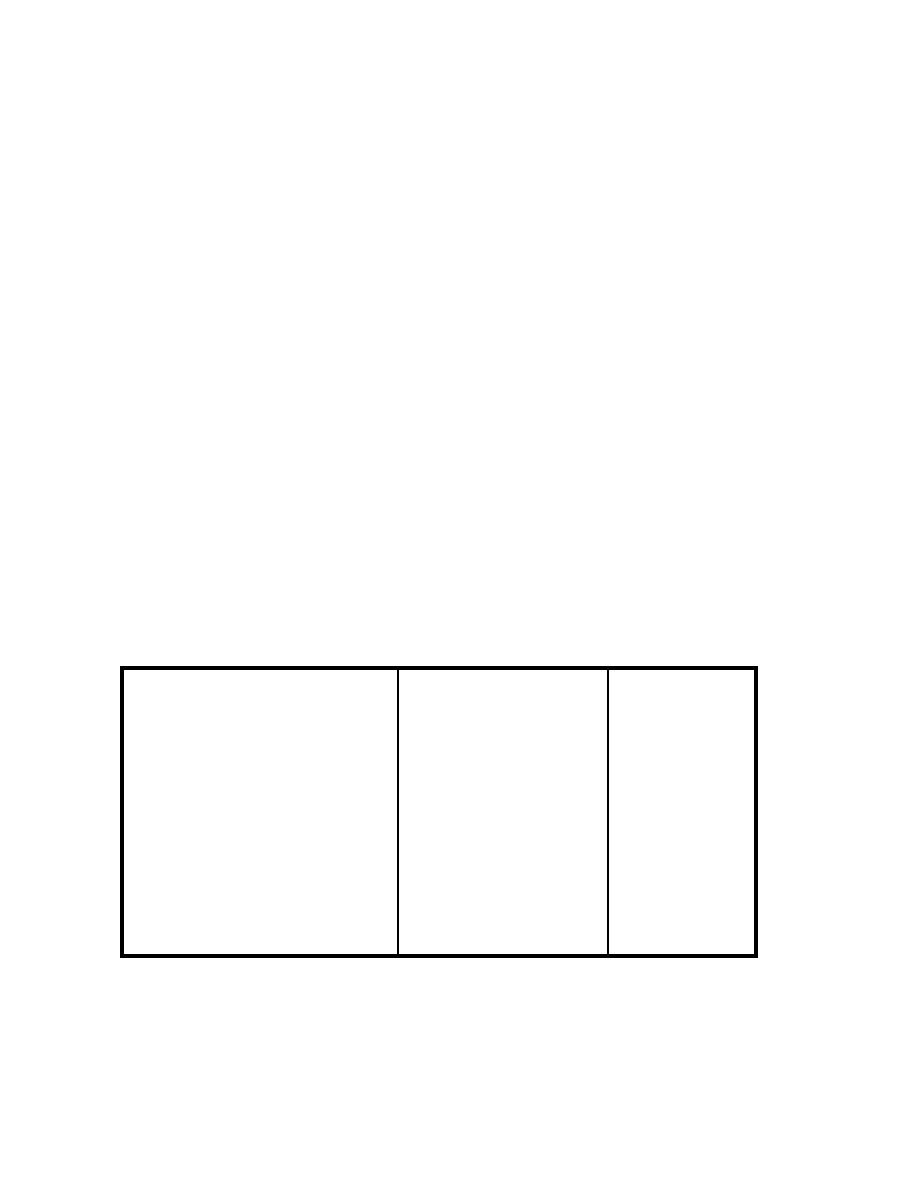
MIL-HDBK-1110
pressure using air from the compressor. A hose from the air
compressor to the nozzle supplies the air required for
atomization of the paint. The tank may be equipped with an
agitator for continuously mixing paints with heavy pigments. The
air compressor must have sufficient capacity to maintain adequate
and constant air pressure and airflow for paint atomization at
the nozzle, for paint flow from the tank to the nozzle, for
powering the agitator and other job-site requirements. A
constant flow of air from the compressor is required for proper
painting. Loss of pressure at the nozzle can cause pulsating
delivery of the paint as opposed to the desired constant flow.
(Data sheets from paint manufacturers give recommended air
pressures for spraying.)
a) Air Hose. The air hose connecting the compressor
to the tank must be of sufficient diameter to maintain adequate
air pressure. Required diameter of the fluid hose connecting the
gun and tank depends on volume and pressure of paint required at
the gun. The hose should be kept as short as possible,
especially when spraying coatings with heavy pigments, to avoid
settling of pigments within the supply hose. Also, the fluid
hose must be resistant to paints and solvents that flow through
it. As with blasting equipment, the air supply must be free of
moisture, oil, and other impurities. Oil and water should be
removed by separator or extractor attachments to the compressor.
Table 11
Comparison of Conventional Air and Airless Spray
Property
Conventional Air
Airless
Coverage, sq ft/day
4-8000
6-10,000
Overspray
Considerable
Some
Transfer efficiency
Poor (about 30
Fair (35-50)
"Bounce back"
percent)
Minor
Hoses
Significant
1 (fluid)
Penetration of corners,
2 (air and fluid)
crevices and cracks
Moderate
Film build per coat
Fair
Good
Versatility
Fair
Fair
Paint clogging problems
Good
More
Operator control
Few
Poor
Safety during painting
Good
Poor
Safety during cleanup
Fair
Poor
Fair
110



 Previous Page
Previous Page
